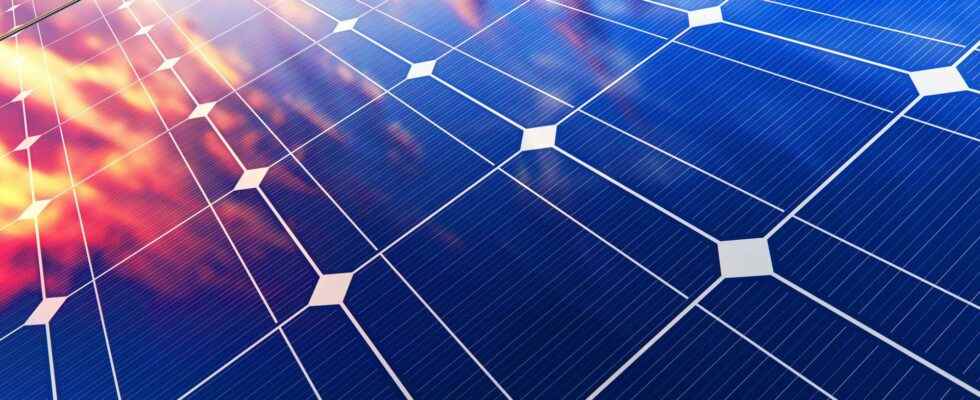The solar panels are intended to recover theenergy from solar radiation to transform it into heat or electricity.
The uses of solar panels
In the first case, the panels are said to be thermal and are used, for example, to heat water. In the second case, the electricity is produced using photovoltaic cells partially composed of materials semiconductors.
Note that the performance of photovoltaic panels highly dependent on the materials used in their construction (more than 25% for the silicon monocrystalline, against 7% for cells made of quantum dots).
The different types of solar panels
There are several types of solar panels: the thermal solar panel, the photovoltaic solar panelthe aerovoltaic solar panel and the hybrid solar panel.
The thermal solar panel does not produce electricity, its mode of operation consists of transforming solar energy into heat energy. It is energy used to supply a heating system or to heat the water in the sanitary network. During the day, it absorbs heat from the rays of the Sun. However, if the temperature is below 0°C, it is impossible to heat the domestic water. This type of solar panel is installed facing south with an optimal inclination of 45°.
The photovoltaic solar panel is useful to become self-sufficient in electricity since it is able to produce electricity. Photovoltaic cells convert the sun’s rays into electricity by capturing photons present in the light. L’inverter will be responsible for transforming the direct current in alternating current. This is the most common solar panel on the market. Depending on the model chosen, the cells can vary: the amorphous silicon cell, the monocrystalline silicon cell, the polycrystalline silicon cell, the tandem cell, the CIGS cell… The installation of a photovoltaic solar panel is simple and less expensive compared to a hybrid panel. The panel faces south-east and the inclination is between 30 and 35°.
The aerovoltaic solar panel is a little less known but can be a good solution for heating sanitary water and for heating a home. The principle of operation of the panel is to recover the solar heat in its lower layer where circulates theair hot. However, its installation is rather complicated. The installer must plan for a 30° inclination and orient the panel towards the south.
The hybrid solar panel heats domestic water and produces electricity at the same time. Its cost is higher than that of a photovoltaic and thermal solar panel. Its mode of operation is simple, the captured light generates electricity and the heat exchanger ensures the production of hot water by capturing the heat from the sun’s rays. The advantage of this system is that it makes energy independence possible in the home. The hybrid panel is installed facing south with an inclination of 30°.
The profitability
The profitability of solar panels is an important factor to understand when deciding to turn to renewable energies. You should know that photovoltaic solar panels are more profitable in regions with better sunshine.
To calculate profitability, the cost-benefit ratio is rather easy to calculate. Generally, it is a profitable investment thanks to the efficiency of the photovoltaic cells. Several variables must be taken into account when calculating the yield, in particular the power of your installation.
A solar panel installation reduces the need for an electricity supplier to reduce monthly bills. The goal is to limit expenses to make the installation profitable as quickly as possible.
Environmental issues of solar panels
Photovoltaic panels produce electricity without emitting pollution at the time of energy transformation. The manufacture, installation and recycling of these panels have a limited negative impact on the environment. Technologies are evolving to further reduce adverse environmental effects. When the solar panel reaches the end of its life, it is 85% recyclable. In France, the photovoltaic recycling policy is rigorous.
You will also be interested
Interested in what you just read?
